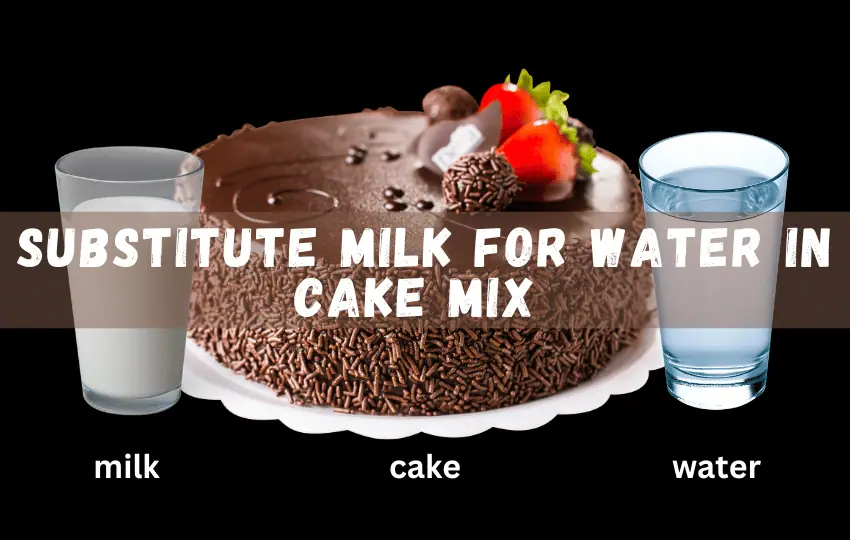Baking a cake is always an exciting and gratifying affair, but what if you don’t have all the ingredients the recipe requires?
In such a scenario, a simple ingredient substitution can come in handy, saving you time and trips to the store.
The most common ingredient substitution is water for milk or vice versa. However, using milk instead of water can improve the texture, taste, and moistness of your cake.
In this post, we will explore 10 substitutes for water in cake mix, using milk and their ratios.
If you’re a professional baker or a home cook, these alternatives will change the game for you.
In short, " What Can I use instead of milk for water in a cake mix?" Whole Milk, Almond Milk, Coconut Milk, Evaporated Milk, Soy Milk, Buttermilk, Yogurt, Cream, Powdered Milk, Goat Milk, Sour Cream, Heavy Cream Cashew Milk.
What is cake mix?
A cake mix is a pre-made dry mixture that contains all the necessary ingredients for baking a cake. This mixture typically includes flour, sugar, baking powder, and other dry ingredients.
Some cake mixes may also include powdered eggs or other flavorings.
Cake mixes were first introduced in the 1930s as a way to simplify the cake-baking process for home cooks.
Since then, they have become a famous option for busy bakers who want to make a cake without the hassle of measuring out each individual ingredient.
However, some people have concerns about the quality of cake mixes compared to homemade cakes.
While cake mixes can produce a cake that is quick and easy to make, the taste and texture may not be as good as a cake made entirely from scratch.
It’s also worth noting that some cake mixes may contain artificial flavors, colors, or preservatives, which can be a concern for people who prefer to use natural and minimally processed ingredients in their baking.
Overall, cake mix is a convenient option for those who want to make a cake quickly and easily, but it’s important to consider the ingredients and quality when making a decision about whether to use it or not.
Best substitutes milk for water in cake mix
1. Whole Milk
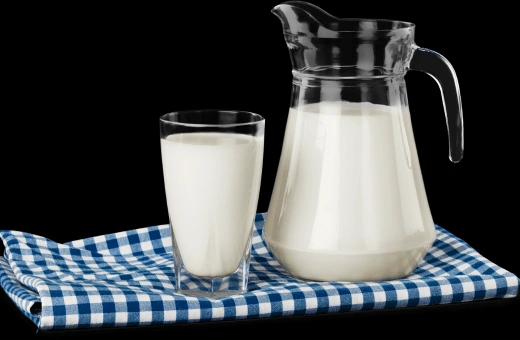
The best milk substitute for water in a cake mix is whole milk. Whole milk has more fat, which makes it excellent for adding flavor and richness to your cake.
Ratio or measurement: If your recipe calls for one cup of water, replace it with one cup of whole milk.
2. Almond Milk
Almond milk is a healthy and delicious option for baking. Almond milk has a little nutty flavor that complements a variety of baked goods, especially cakes.
Ratio or measurement: If your recipe calls for one cup of water, replace it with one cup of almond milk.
3. Coconut Milk
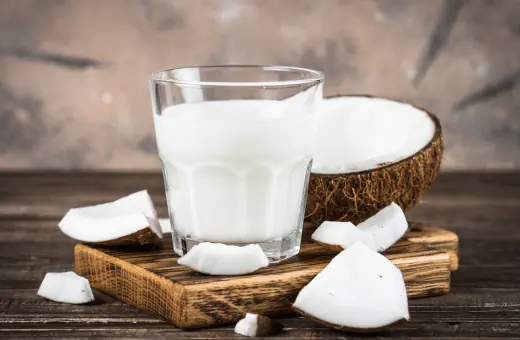
Coconut milk has a sweet taste that makes it an excellent substitute for water in cakes that have mild flavors.
Ratio or measurement: If your recipe calls for one cup of water, replace it with one cup of coconut milk.
4. Evaporated Milk
Evaporated milk is thicker and creamier than regular milk, making it a great alternative for water in a cake mix.
Ratio or measurement: If your recipe calls for one cup of water, replace it with one cup of evaporated milk.
5. Soy Milk
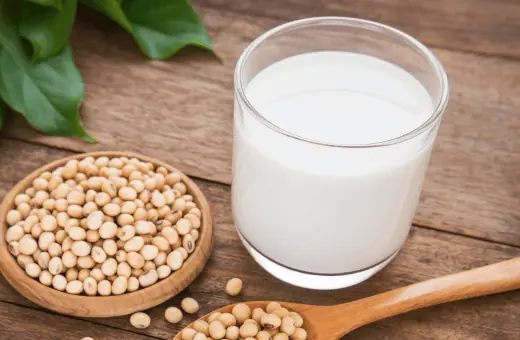
Soy milk is an excellent dairy-free substitute that’s rich in protein and nutrients. It has a little nutty and sweet flavor and complements various desserts.
Ratio or measurement: If your recipe calls for one cup of water, replace it with one cup of soy milk.
6. Buttermilk
Buttermilk is another excellent milk substitute for water in the cake mix. It’s sour and acidic, which helps activate the baking powder or soda in your cake, creating a light and fluffy texture.
Ratio or measurement: If your recipe calls for one cup of water, use 1 cup of buttermilk.
7. Yogurt
Yogurt is an adaptable ingredient that can be used in sweet and savory dishes. It has a tangy flavor that makes it a favorite milk substitute for water in cakes.
Ratio or measurement: If your recipe calls for one cup of water, use 1 cup of plain, unsweetened yogurt.
8. Cream
Heavy cream is thick and rich and adds a velvety texture to your baked goods. It’s an excellent milk substitute when making rich and decadent cakes such as cheesecakes or chocolate cakes.
Ratio or measurement: If your recipe calls for one cup of water, use 1 cup of heavy cream.
9. Powdered Milk
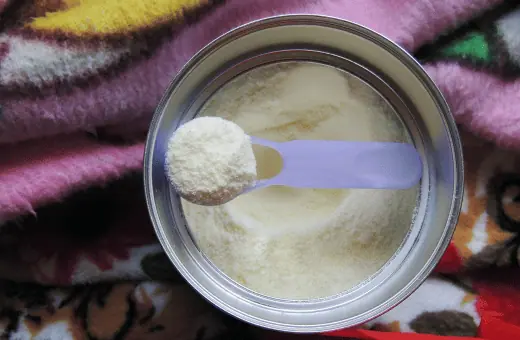
Powdered milk is an excellent long-shelf-life milk substitute for water in cake mix. It’s made from regular milk but has been dehydrated, making it easy to store and use.
Ratio or measurement: If your recipe calls for one cup of water, use 1 cup of powdered milk mixed with 1 cup of water.
10. Goat Milk
Goat milk is lactose-free, making it an excellent milk substitute for people who are lactose intolerant. It has a slightly tangy flavor that complements many cake flavors.
Ratio or measurement: If your recipe calls for one cup of water, use 1 cup of goat milk.
11. Sour Cream
Sour cream adds creaminess and density to your cake, making it moist and rich.
Ratio or measurement: You can substitute one cup of water with one cup of sour cream to yield superior taste and texture.
12. Heavy Cream
Heavy cream is an incredible ingredient to enhance the richness and moisture of your cake.
Ratio or measurement: You can substitute one cup of water with a cup of heavy cream to achieve a delectable, creamy cake.
13. Cashew Milk
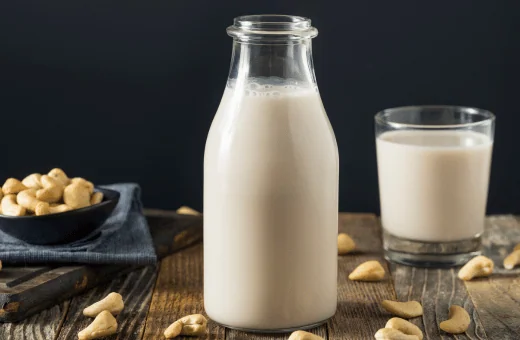
Cashew milk is a great substitute if you’re trying to reduce dairy intake. It adds nutty flavor and richness to the cake while keeping it light.
Ratio or measurement: Replace one cup of water with one cup of cashew milk for a delicious variation.
Can you utilize milk instead of water in the Pillsbury cake mix?
Pillsbury cake mix is a popular baking product that requires only the addition of water to create a moist and delicious cake.
However, if you wonder if possible to substitute milk for water in the Pillsbury cake mix, the answer is yes. In fact, using milk instead of water can enhance the flavor and texture of the cake.
Milk contains proteins and fat that can enrich the cake batter, resulting in a richer and creamier taste. Additionally, milk adds moisture to the cake while contributing to a softer and more tender crumb.
When substituting milk for water in the Pillsbury cake mix, it is important to note that the amount of milk used may need to be adjusted.
Generally, an equal amount of milk can be used instead of water, but it is recommended to start with a smaller amount of milk and slowly add more until the desired thickness is reached.
In summary, using milk instead of water in the Pillsbury cake mix can provide a more flavorful and tender cake. Experiment with different amounts of milk to find the perfect balance for your cake.
Can I use milk rather than water in Duncan Hines’s cake mix?
If you want to substitute milk with water in your Duncan Hines cake mix recipe, it is definitely possible.
While water is a common ingredient in most cake mixes, you can use milk instead to make your cake richer, creamier, and more flavorful.
Using milk in place of water will add more fat and protein to your cake, which can help create a denser, more moist cake because milk has more substance than water.
When making this substitution, it’s important to know the right ratio of milk to use for your cake mix.
If your mix calls for 1 cup of water, then you can use 1 cup of milk instead.
Keep in mind that the added moisture may make your cake slightly dense, so you may need to adjust your baking time accordingly.
Overall, substituting milk for water in a Duncan Hines cake mix can be a great way to enhance the flavor and texture of your cake. So, go forward and give it a try, and see how it turns out!
Conclusion on substitute milk for water in cake mix
In conclusion, making cakes at home is a thrilling experience, and with the right substitute for water, you can take the ingredient combination to a whole new level.
By using milk alternatives like buttermilk, sour cream, Greek yogurt, coconut milk, heavy cream, evaporated milk, almond milk, cashew milk, and soy milk, you can create a superior taste, which makes your cake stand out.
With this guide, take your cake mixes to the next level and enjoy the new flavors and textures on board.
FAQs on substitute milk for water in cake mix
Q1. What is similar to a cake mixture?
A cake mixture is a combination of different ingredients that are blended together to form a batter that can be baked into a cake. Similarly, there are many other mixtures that are used in cooking and baking, such as bread dough, pancake batter, and cookie dough.
These mixtures are made up of different proportions of flour, liquids, fats, and other ingredients and can be customized according to personal preference or dietary restrictions. The process of mixing these ingredients together requires precision and attention to detail, as each component plays a crucial role in the final product.
Whether you’re making a cake, bread, or any other baked good, the mixture is the foundation upon which everything else is built, and the quality of the mixture will ultimately determine the success of the dish.
Q2. Does milk instead of water make the cake moist?
Many bakers and home cooks often wonder if using milk instead of water in their cake batter can result in a moister cake. The short answer is yes, it can. Milk contains natural fats and proteins that can add moisture and richness to baked goods.
In fact, many cake recipes already call for milk as an ingredient, indicating that it can be a key factor in achieving a moist cake. Additionally, milk can also help to make a cake more tender and flavorful.
However, it’s necessary to note that not all cake recipes may benefit from using milk instead of water. For example, if a recipe already has a high-fat content, such as butter or oil, using milk instead of water may not make a significant difference in the final result.
Ultimately, the decision to use milk instead of water in a cake recipe will depend on the individual recipe and personal preference. It’s still a good idea to experiment and see what works best for your specific baking needs.
Q3. Can I use half and half rather of water in the cake mix?
If you’re looking to add a richer, creamier flavor to your cake mix, using half and half as a substitute for water is definitely an option to consider. Half and half combine equal parts of whole milk and light cream, making it a richer liquid than plain water. This substitution can result in a more moist and flavorful cake that has a slightly creamier texture.
Yet, it’s necessary to keep in mind that using half and half as a substitute may also alter the overall consistency of the cake. Depending on the recipe and baking instructions, the cake may end up denser or more tender than intended. Additionally, half and half do contain more fat than water, which can affect the nutritional content of your final product.
When making this substitution, consider the type of cake you’re baking and the other ingredients involved. For example, a denser cake like pound cake may benefit from the richness of half and half, while a lighter sponge cake may become weighed down. It’s also a nice idea to decrease the amount of sugar in your recipe slightly, as half and half do contain natural sugars from the cream.
In conclusion, using half and half instead of water in cake mix is a viable option for achieving a richer, creamier flavor. However, be aware of the potential changes in consistency and nutritional content, and adjust your recipe accordingly. Happy baking!
Q4. Can you use butter rather than oil in the cake mix?
When it comes to baking cakes, the choice of ingredients can significantly impact the taste, texture, and overall quality of the baked product. While oil and butter are both commonly used in cake recipes, you may wonder if you can substitute one for the other.
The answer is yes; you can utilize butter instead of oil in the cake mix. Yet, there’re a few things to consider before making the switch.
Firstly, butter is a solid at room temperature, while oil is a liquid. This means that if you use butter instead of oil in a cake recipe, your batter may be thicker and more difficult to mix. To avoid this, you should melt the butter before adding it to the cake mix.
Secondly, butter contains more saturated fat than oil, which can affect the cake’s texture and moistness. Saturated fat tends to make cakes denser, while unsaturated fats, such as those found in oils, make them lighter and fluffier. If you choose to use butter rather than oil, consider reducing the amount of butter or adding additional liquid to the recipe to compensate for its denser texture.
Lastly, the flavor of the cake may be altered by using butter instead of oil. Butter has a distinctly rich, creamy flavor, which some people may prefer over the more neutral taste of oil. Yet, this can also depend on the type of oil you’re using – some oils, such as coconut oil or avocado oil, have a stronger flavor that can add depth to your cake.
In conclusion, while you can use butter instead of oil in cake mix, it’s important to consider the potential impacts on texture, moistness, and flavor. Experiment with various ratios and ingredients to find the combination that works best for you and your taste preferences.

